Месторасположение
Адрес
Почтовый код 350-1123
Сайтама-кен, Кавагоэ-си, Вакитахонтё 11-10
3 минуты пешком от станции Кавагоэ (западный выход, линия Тобутодзё JR)
 | CONTACT : | TEL : +81-49-241-1515 | Заявка на поступление |
Почтовый код 350-1123
Сайтама-кен, Кавагоэ-си, Вакитахонтё 11-10
3 минуты пешком от станции Кавагоэ (западный выход, линия Тобутодзё JR)
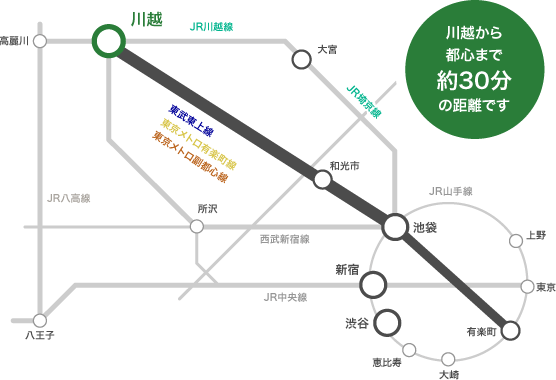
Kawagoe city center is directly connected to Tokyo. From Kawagoe, Kawagoe-shi and Honkawagoe station is possible to reach Shinjuku, Shibuya and Ikebukuro without changing train.
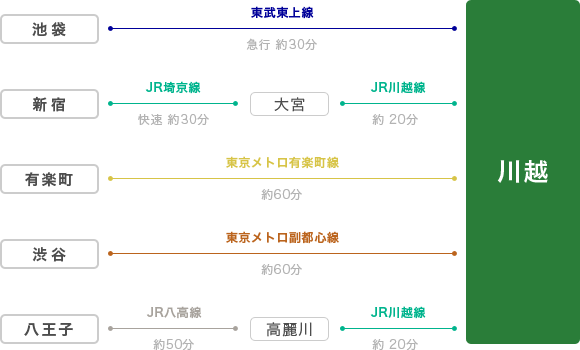
Access to Shinjuku
| ||
Access to Shibuya
| ||
Access to Ikebukuro
| ||
Access to Airport (bus) ・ To Haneda, about 2 hours. | ||
Access to Shinjuku
| Access to Shibuya
| Access to Ikebukuro
|
Access to Airport (bus) ・ To Haneda, about 2 hours. | ||
During the Edo period, Kawagoe was a prosperous castle town called “Little Edo”. The city shows a castle and many shrines, temples, historic spot and ancient buildings. It`s the third city in Kanto region, after Kamakura in Kanagawa prefecture and Nikko in Tochigi prefecture, to have many cultural assets. Kawagoe is a famous tourist destination also because is very close to Tokyo, in a year about 6 million of visitor explore it. It is also the regional hub city of Saitama prefecture and in counts more than 350,000 population.
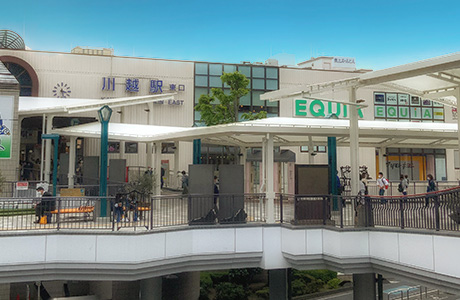
На станции много ресторанов. Также рядом расположен квартал для шопинга.
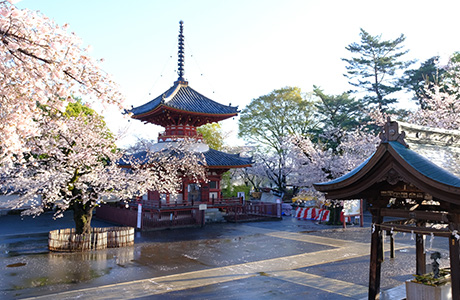
Это исторический буддийский храм, построенный около тысячи лет назад. Кавагоэ - это туристическая точка, известная своей старинной архитектурой.
Школа расположена в тридцати минутах от Токио. В выходные студенты могут провести время в городе, делая покупки и отдыхая. До станций Сибуя, Харадзюку и Акихабара можно добраться за 50 минут.
The Toki no kane is one of the best tourist spot of Kawagoe. It has become the symbol of the city. Local people may call it also Kane Tsuki To, the Tower Bell. The structure has 3 floors and its height is 16 meters. In the past its sound was used to let people know the time, nowadays a mechanic device rings 4 times a day (6 a.m., midday, 3p.m., 6p.m.). In 1996 the Time bell was chosen by the Environmental Agency Sponsorship as one of the “100 Sound Landscapes of Japan”.
In Kawagoe there are the characteristic old style warehouses which in origin were built as Edo`s fireproof ranch houses. Nowadays in Tokyo there aren’t such old style buildings anymore. In December 1999 these buildings were selected for the project called “Important Preservation Districts for Groups of Historic Buildings”, and in January 2007 selected as one of the “Top 100 Japanese Beautiful Historical Parks”.
Candy Alley (菓子屋横丁, Kashiya Yokochō), a lot of candy and sweets had been made in this street since the beginning of Meiji. Immediately following the Great Earthquake of 1923, Tokyo experienced a great shortfall in supply of Japanese sweets; orders made to the candy stores in Kashiya Yokocho thereby surged, and the numbers of stores at the beginning of Showa was over than 70.
Now only 20 stores exist in this street, the atmosphere that Kashiya Yokocho corrosion, candy and sweets is getting more and more nostalgia fans, and a lot of visitors come to here, it was selected as [Smell Scenery Top 100] by Ministry of the Environment at 2001
Watching cherry blossoms is a way to celebrate the arrival of the spring. It`s an ancient Japanese tradition. The full bloom period changes depending on the region and climate, but approximately a period is between the end of March and the beginning of April. The full bloom goes on just for a week. Cherry flowers bloom a very short period and after that petals gently fall on the ground. People in Japan feel and love that transient.
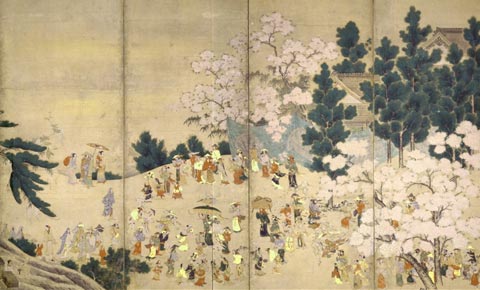

From Nara until the Heian period, court aristocracy members hold poems composition gatherings in occasion of the cherry bloom, this is the origin of the Hanami. In the Kamakura period cherry blossoms viewing spread among all the social classes and become fashionable for samurai and merchants.
In the Edo period it was established as an amusement for the whole population. Regarding Hanami`s origin there is also the theory suggesting that it generates from the ancient farmers beliefs in the “Sa” god. The theory says that ancient farmers offered cherry trees to the god, prayed for an abundant harvest and hold banquet during the bloom period.
"Sa" was the god of the mountains and the fields, and because the places where he meditated was called “kura” the cherry threes took the name of “sakura.”
Cherry blossoms are about 600 types. here we will introduce the most representative varieties
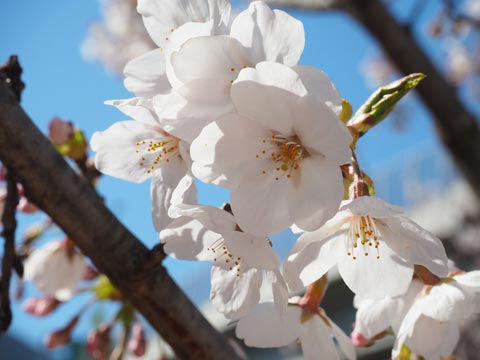
Sakura is Somei Yoshino! The 80% of cherry trees in Japan are this particular variety. The leaves sprout only after the bloom.Somei Yoshino is the standard variety of tree used for blossoms viewing and its blooming period starts from the south and continue toward the north of Japan.
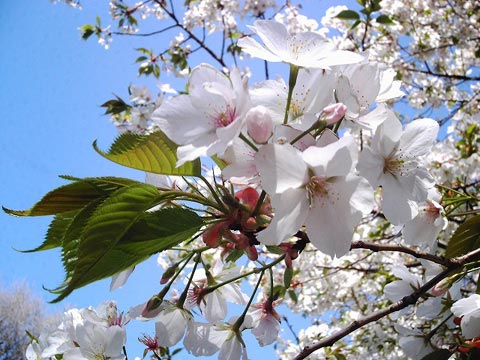
In this variety of cherry tree the green leaves sprout along with the blooming flowers.
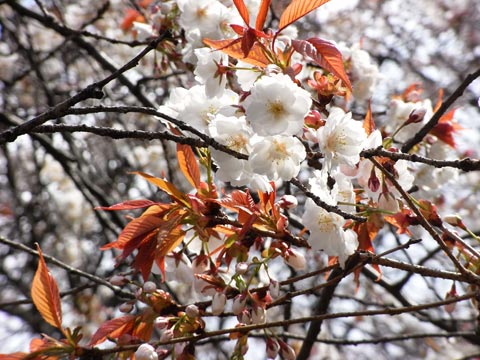
These trees give reddish-brown leaves that sprout along with the blooming flowers.
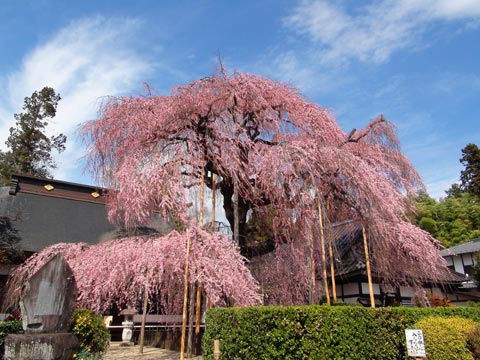
Is the generic name for a type of cherry trees which branches droop like a willow.
Respect the regulation provided in the hanami spots and do not disturb other people`s viewing
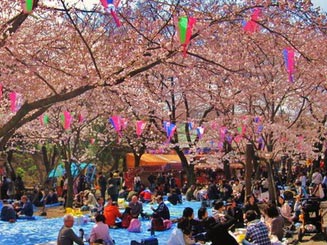
There are about 100 trees that bloom in the temple and in the fool bloom period the sky is filled by the color of cherry. We also suggest appreciating the night view of cherry blossoms.
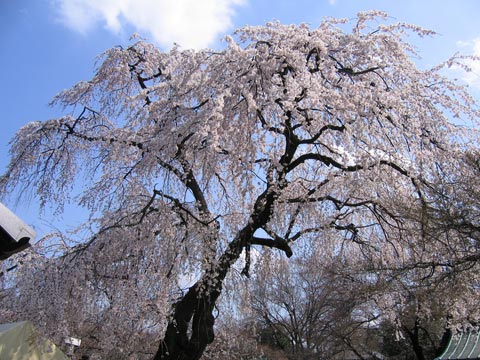
Is very popular the cherry`s view in front of the Shidarezakura, the centenary main temple. During the full bloom period in the night cherry trees are lighted up and create a suggestive atmosphere.
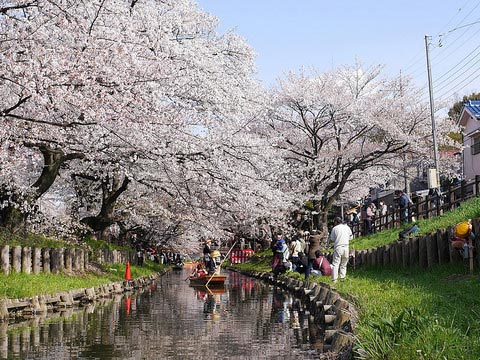
A 500 meter long row of cherry trees is planted along the Shingashi river. The flowers reflect their shape and their color in the water and also during the cherry blossom falling period is possible to appreciate a very beautiful landscape.
The principal entrance of the Kawagoe Girls Public High School.
There is a row of cherry trees in front of the main gate of the high school. It`s really easy access to this spot because is close to Kawagoe-shi Station.